Related Research Articles

Folklore is the body of expressive culture shared by a particular group of people, culture or subculture. This includes oral traditions such as tales, myths, legends, proverbs, poems, jokes, and other oral traditions. This also includes material culture, such as traditional building styles common to the group. Folklore also encompasses customary lore, taking actions for folk beliefs, and the forms and rituals of celebrations such as Christmas, weddings, folk dances, and initiation rites.
Latvian mythology is the collection of myths that have emerged throughout the history of Latvia, sometimes being elaborated upon by successive generations, and at other times being rejected and replaced by other explanatory narratives. These myths, for the most part, likely stem from Proto-Indo-European practices and the later folk traditions of the Latvian people and pre-Christian Baltic mythology.
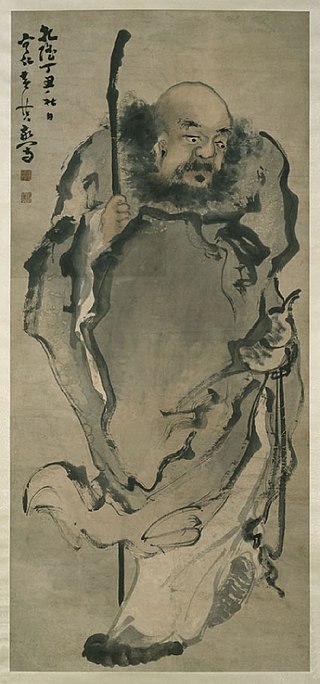
Li Tieguai is a figure in Chinese folklore and one of the Eight Immortals in the Taoist pantheon. He is sometimes described as irascible and ill-tempered, but also benevolent to the poor, sick and the needy, whose suffering he alleviates with special medicine from his bottle gourd. He is often portrayed as an ugly old man with a dirty face, a scraggly beard, and messy hair held by a golden band. He walks with the aid of an iron crutch and often has a gourd slung over his shoulder or held in his hand. He often is depicted as a clown figure who descends to earth in the form of a beggar who uses his power to fight for the oppressed and needy, and to heal others.
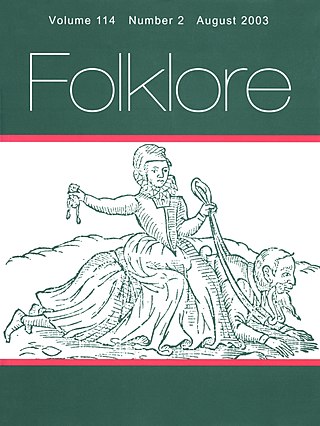
Folklore studies is the branch of anthropology devoted to the study of folklore. This term, along with its synonyms, gained currency in the 1950s to distinguish the academic study of traditional culture from the folklore artifacts themselves. It became established as a field across both Europe and North America, coordinating with Volkskunde (German), folkeminner (Norwegian), and folkminnen (Swedish), among others.
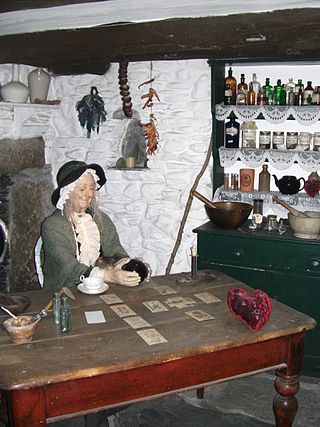
The cunning folk were professional or semi-professional practitioners of magic in Europe from the medieval period through the early 20th century. In Britain they were known by a variety of names in different regions of the country, including wise men and wise women, pellars, wizards, dyn hysbys, and sometimes white witches.
Chinese folklore encompasses the folklore of China, and includes songs, poetry, dances, puppetry, and tales. It often tells stories of human nature, historical or legendary events, love, and the supernatural. The stories often explain natural phenomena and distinctive landmarks. Along with Chinese mythology, it forms an important element in Chinese folk religion.

The Tar-Baby is the second of the Uncle Remus stories published in 1881; it is about a doll made of tar and turpentine used by the villainous Br'er Fox to entrap Br'er Rabbit. The more that Br'er Rabbit fights the Tar-Baby, the more entangled he becomes.
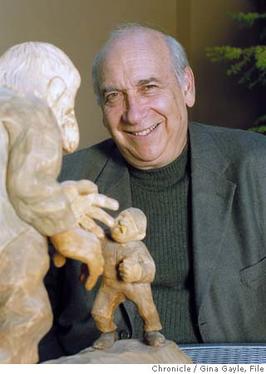
Alan Dundes was an American folklorist. He spent much of his career as a professional academic at the University of California, Berkeley and published his ideas in a wide range of books and articles.
The tradition of folklore—folktales, jokes, legends, and the like—in the Turkish language is very rich, and is incorporated into everyday life and events.

The King of England and his Three Sons is a Romani fairy tale collected by Joseph Jacobs in More English Fairy Tales. He listed as his source Francis Hindes Groome's In Gypsy Tents, where the informant was John Roberts, a Welsh Roma. Groome published the tale as An Old King and his three Sons in England.
Romani folklore encompasses the folktales, myths, oral traditions, and legends of the Romani people. The Romani were nomadic when they departed India during the Middle Ages. They migrated widely, particularly to Europe, while other groups stayed and became sedentary. Some legends say that certain Romani have passive psychic powers such as empathy, precognition, retrocognition, or psychometry. Other legends include the ability to levitate, travel through astral projection by way of meditation, invoke curses or blessings, conjure or channel spirits, and skill with illusion-casting. The Roma from Slavic countries believe in werewolves. Romani chovihanis often use a variety of herbs and amulets for protection. Garlic is a popular herb used by the Roma.
The Folklore Society (FLS) is a registered charity under English law based in London, England for the study of folklore. Its office is at 50 Fitzroy Street, London home of the Royal Anthropological Institute of Great Britain and Ireland.
The Three May Peaches is a French fairy tale collected by Paul Delarue. He collected more than thirty French types of this tale, which is known in Europe, North Africa, and Asia as far as India.

Cornish mythology is the folk tradition and mythology of the Cornish people. It consists partly of folk traditions developed in Cornwall and partly of traditions developed by Britons elsewhere before the end of the first millennium, often shared with those of the Breton and Welsh peoples. Some of this contains remnants of the mythology of pre-Christian Britain.

The toadstone, also known as bufonite, is a mythical stone or gem that was thought to be found in the head of a toad. It was supposed to be an antidote to poison and in this it is like batrachite, supposedly formed in the heads of frogs. Toadstones were actually the button-like fossilised teeth of Scheenstia, an extinct genus of ray-finned fish from the Jurassic and Cretaceous periods. They appeared to be "stones that are perfect in form" and were set by European jewellers into magical rings and amulets from Medieval times until the 18th century.
A nuggle, njuggle, or neugle, is a mythical water horse of primarily Shetland folklore where it is also referred to as a shoepultie or shoopiltee on some parts of the islands. A nocturnal creature that is always of a male gender, there are occasional fleeting mentions of him connected with the Orkney islands but he is more frequently associated with the rivers, streams and lochs of Shetland. He is easily recognised by his distinctive wheel-like tail and, unlike his evil counterparts the each-uisge or the nuckelavee, has a fairly gentle disposition being more prone to playing pranks and making mischief rather than having malicious intents.

Elfshot or elf-shot is a medical condition described in Anglo-Saxon medical texts believed to be caused by elves shooting invisible elf-arrows at a person or animal, causing sudden shooting pains localized to a particular area of the body. Modern diagnoses might include rheumatism, arthritis, muscle stitches or cramps.

Cunning folk, also known as folk healers or wise folk, were practitioners of folk medicine, helpful folk magic and divination in Europe from the Middle Ages until the 20th century. Their practices were known as the cunning craft. Their services also included thwarting witchcraft. Although some cunning folk were denounced as witches themselves, they made up a minority of those accused, and the common people generally made a distinction between the two. The name 'cunning folk' originally referred to folk-healers and magic-workers in Britain, but the name is now applied as an umbrella term for similar people in other parts of Europe.
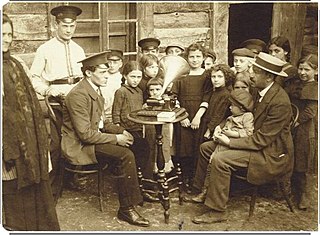
Susman Kiselgof was a Russian-Jewish folksong collector and pedagogue associated with the Society for Jewish Folk Music in St. Petersburg. Like his contemporary Joel Engel, he conducted fieldwork in the Russian Empire to collect Jewish religious and secular music. Materials he collected were used in the compositions of such figures as Joseph Achron, Lev Pulver, and Alexander Krein.

Danish folk dance is characterized by being easy going, gentle, and relatively easy to learn. Danish folk dance is mainly a social dance involving groups or groups of couples of dancers, often designed for large gatherings. The dances were supposed to be simple enough for everyone to join in. Danish folk dances are made for social and educational purposes, generally speaking not for exhibitional purposes.
References
- ↑ March, H. Colley (1899). "Miscellanea: Dorset Folklore collected in 1879". Folklore. 10. Folklore Society: 478–89. doi:10.1080/0015587x.1899.9720514 . Retrieved 2009-07-24. p. 479-80.
- ↑ Black, William George (1878). Folk Medicine: A Chapter in the History of Culture. Folklore Society. pp. 61–62.